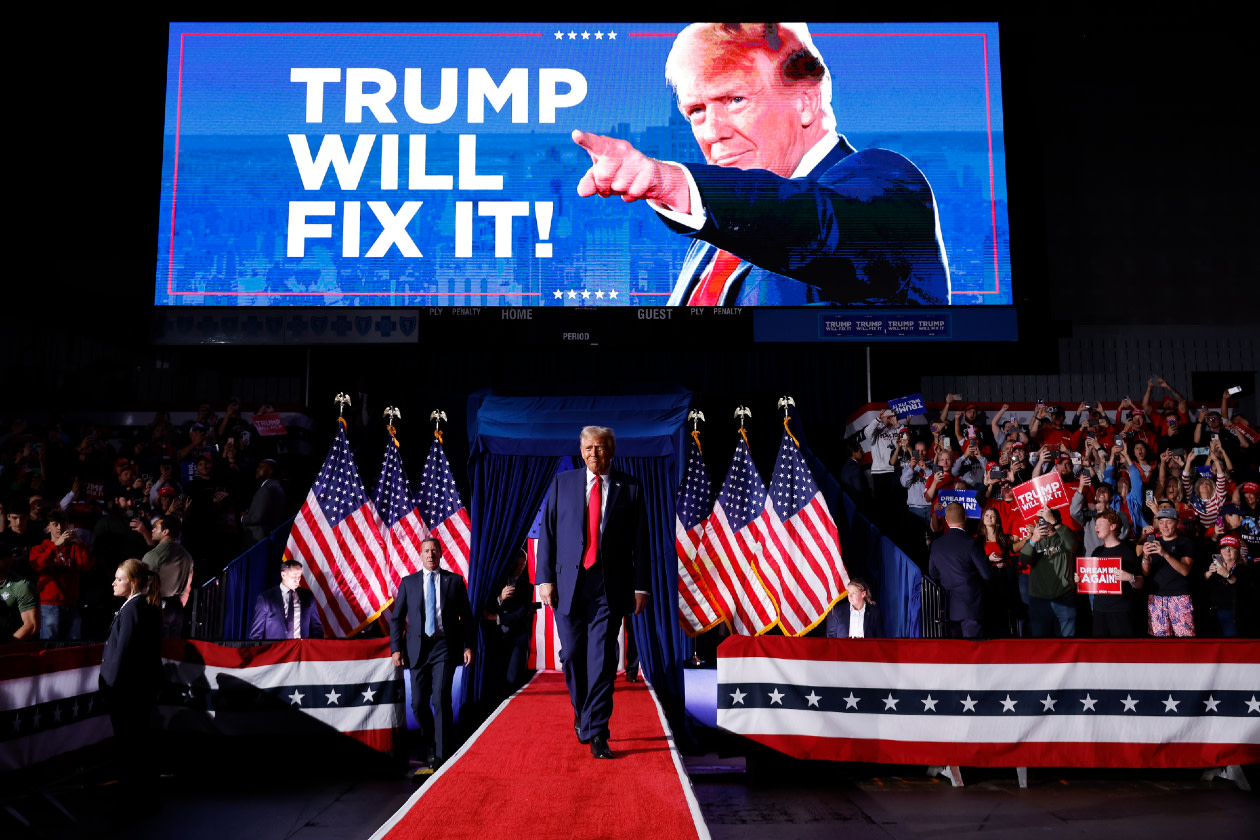Financial markets have been rattled at the prospects of a full-blown trade war breaking out after the US slapped punishing tariffs on Canada, Mexico and China, prompting retaliation.
Investors are buckling up for a rollercoaster ride for the global economy, with the European Union expected to be next in line for punitive duties.
This article isn’t personal advice. Remember, investments can rise and fall in value, so you could get back less than you invest. Past performance isn’t a guide to the future. If you’re not sure if an investment’s right for you, ask for financial advice.
How have stock markets reacted to Trump’s tariffs?
The FTSE 100 has been stopped in its tracks with the record run upwards going into reverse. It fell sharply in early trade amid worries that listed multinationals could be caught in the crossfire of the trade wars.
Stock markets in Europe and Asia and the US have also been turbulent.
What was considered to be bluff and bluster from Trump has turned into cold hard reality. But president Trump is no longer the only one playing hardball.
China, Mexico and Canada retaliate – what’s next?
Canada’s outgoing prime minister Trudeau immediately imposed tit-for-tat 25% tariffs on $155bn in US imports. Mexico’s president has also ordered retaliatory action.
These new aggressive actions on what used to be neighbouring allies, are the modus operandi of the new Trump administration, and part of not just trade policy but national security strategy.
They’ve been imposed, not simply because of goods surpluses with the US, but over claims there’s been a lack surveillance on the borders enabling fentanyl to pass through and help fuel the US opioid crisis.
There’s a glimmer of hope that a long-running dispute could be averted with a flurry of calls expected between Trump the leaders of Canada and Mexico, with China also counting on talks.
But what’s clear is that Trump’s way of doing business is to sow seeds of chaos and unpredictability to gain domestic political wins.
What could Trump’s tariffs mean for inflation?
The fast-developing situation has re-ignited inflation concerns, given that tariffs are set to push up consumer prices.
Canadians have already been warned they face tough times ahead, and even Trump has said there might be some pain for Americans.
While some costs might be able to be absorbed by importers and retailers, the burden is set to be passed onto customers in the form of higher prices which risks adding to inflationary pressures.
Higher-for-longer interest rates in the US risk weighing on consumer sentiment and their purchasing power and ultimately effect economic growth.
The dollar has surged in strength against a basket of currencies, as hopes for rate cuts from the Fed are reassessed once more.
It’s likely that policymakers will stay cautious until it’s become clearer where the fallout will land in the US economy.
While billions of dollars raised in tariffs might help put a dent in the US deficit, there’s a risk to American growth prospects ahead. The tariffs are likely to push up costs in the supply chain for US manufacturers.
Trump’s big gamble is that US producers would benefit instead as imports become more expensive. But this is wishful thinking, especially in the short term, as supply chains have taken decades to build and changes can take years, if they’re possible.
Trump might assess this is a price worth paying, to gain the fiscal headroom duties offer, to bring in his promised tax cuts.
With the dollar flexing more muscle, there’s already a risk that inflation could be imported to other countries which are highly reliant on raw materials priced in dollars.

What could Trump’s tariffs mean for the UK?
While an interest rate cut is still widely expected from the Bank of England this week, there’s likely to be trepidation voiced among policymakers about the risks ahead from a global trade war.
For now, it looks as though the UK could escape the worst of the tariff threats.
However, an ongoing trade war could end up denting global and UK growth prospects and forcing big companies to reduce prices to stay competitive, which could end up increasing the chances of further rate cuts ahead.
The impact on tech stocks
The latest moves won’t do much to calm the high tensions which have hit the semi-conductor and wider tech sector.
They’re likely to push up costs in the supply chain for US manufacturers, including those in the tech sector.
Companies like NVIDIA rely on the production of chips from outsourced factories overseas, like China and Mexico – but many other parts needed to construct AI data centres could also be vulnerable to tariffs, given they’re imported.
Why is the oil price rising and what’s next?
Brent Crude oil has gained ground as traders assess the risks to the supply of oil on world markets.
Canadian crude imports into the US will be slammed with a 10% tariff, pushing up the costs for US refiners, while energy imports from Mexico will face a 25% tariff.
However, the longer-term outlook for oil is clouded in fresh uncertainty.
The oil price could come under pressure as the tariff war escalates. That’s because as more countries get involved, it’s likely to weigh on energy demand.

(Photo by Chip Somodevilla, Getty Images)



